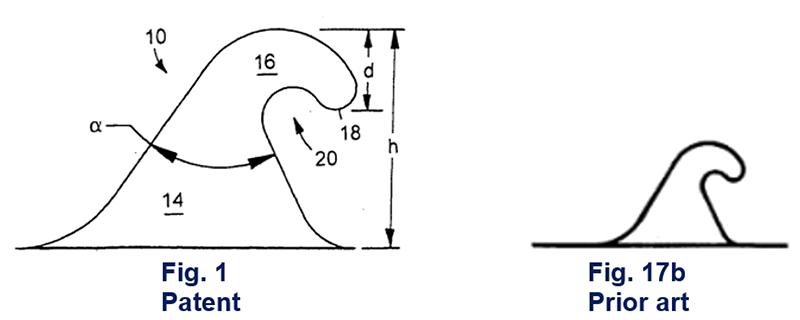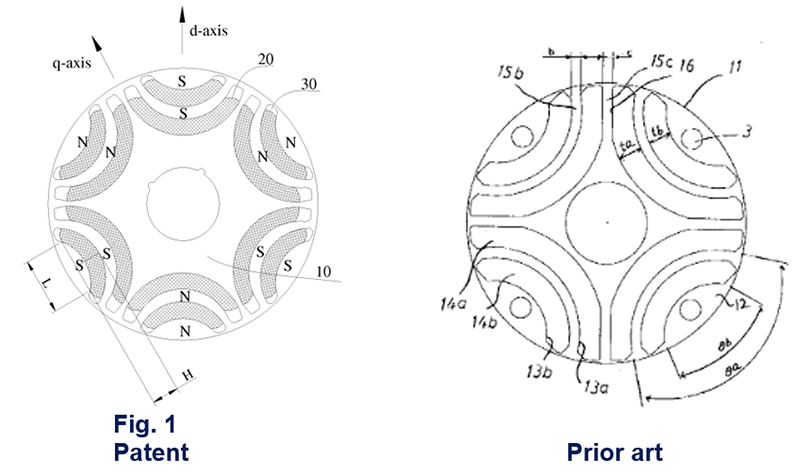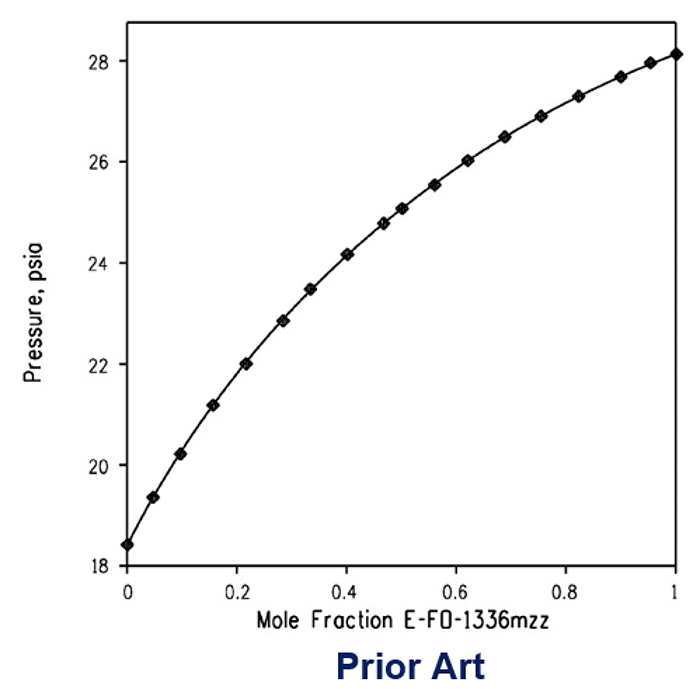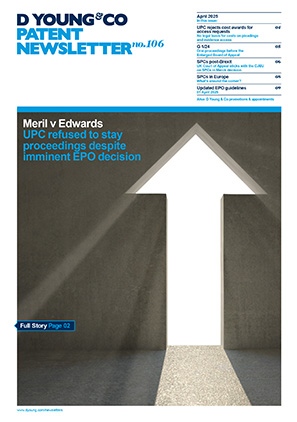Novelty over prior art drawings: a comparison of European and Chinese patent practice
When a piece of prior art is found, attorneys and examiners spend a lot of time discussing the text in that prior art to establish whether the invention can be distinguished from the state of the art and thus novel. Generally speaking, the situation where the relevant disclosure is in schematic drawings of the prior art is quite rare. Recently, however, the Boards of Appeal at the European Patent Office (EPO) dealt with this situation in two different cases. Interestingly, the approach taken by each Board of Appeal was completely different which meant two completely different conclusions regarding the novelty of the claims were reached. In this article, we look at the comparison between the position of the EPO following these cases and the position in China.
Europe
In T0744/19, the patent was revoked by the opposition division on the basis that claim 1 of the main request was anticipated by a prior art schematic drawing in a US patent.

The claim of the main request at appeal specified that the re-entrant tips “are each disposed less than about 0.08mm from an upper surface of their respective hooking members, as measured normal to the base”. In other words, the value of “d” in figure 1 of the patent is about 0.08mm.
In the first instance decision, the opposition division found that this value was disclosed in the schematic drawing of figure 17b. Specifically, the overall height of the hooking element in figure 17b was disclosed in the document as being 0.008mm. The opposition division then estimated that the re-entrant tip in figure 17b was about 2/5th the overall height of the hooking element. Therefore, using this ratio derived only from the figure, the value of “d” in figure 17b was deemed to be 0.0032in which is 0.008mm and thus anticipates the claimed value. In other words, the opposition division used the schematic drawing in the prior art to establish the value of d by knowing the overall height of the hook.
The Board of Appeal did not support this view. The Board of Appeal held that this measurement is an imprecise means of establishing the disclosure of a document and that values calculated on the basis of such estimation will rarely meet the “gold standard” of what a skilled person would derive directly and unambiguously from the document which is required to prejudice the novelty of an invention. In other words, it was not permissible to derive the value of d from the schematic knowing the overall height of the hook. Consequently, the Board of Appeal found that the claimed invention was therefore novel, although ultimately, the patent was revoked as lacking an inventive step.
In T0724/19, the patent was revoked by the opposition division on the basis that claim 1 of the main request was anticipated by a prior art drawing of a conference paper and separately, that claim 1 of one auxiliary request was anticipated by a prior art schematic drawing in a Japanese patent publication. For the purposes of this article, we will focus on the rationale of the Board of Appeal in respect of the Japanese patent publication.

The claims as revoked by the opposition division in the auxiliary request included a range of H/L which was between 0.3 and 0.7. The Board of Appeal noted that the range is a wide range of magnet curvatures and that the lower ratio provides a relatively flat magnet and the upper ratio provides a stronger curved magnet.
The Board of Appeal held that the teaching of the prior art was concerned with the shape of the magnets and that the skilled person would recognise that the shape-related features of the magnets in the prior art are a relevant technical teaching. The Board of Appeal cited a number of past decisions to support the view that dimensions or proportions may be derivable from schematic drawings if they reflect a certain teaching, significance or advantage explained in the description.
However, the Board of Appeal later went on to say that although the skilled person would not take measurements on a purely schematic drawing, the inclusion of dimensions of angles and magnet thicknesses went beyond a mere schematic drawing. Therefore, the skilled person would not be discouraged from taking measurements and indeed, the technical teaching of the prior art concerning the dimensioning of the magnets would motivate the skilled person to actually take measurements from the schematic drawing.
Furthermore, the Board of Appeal said that “[C]orresponding measurements of the magnets in [the prior art] reveal that the degree of curvature of the magnets…lies within the claimed range”. This implies that the Board of Appeal did actually take measurements from the schematic drawing of the prior art, although this was not explicitly stated in the decision.
These two approaches by the Boards of Appeal appear to be contradictory. In particular, the Board of Appeal in T0724/19 noted that due to the fact that the technical teaching of the prior art related to the curvature of the magnets, the skilled person would be encouraged to take measurements from the schematic drawings and use these to derive a ratio. On the other hand, T0744/19 specifically notes that ratios derived from schematic drawings will rarely meet the gold standard to support an anticipatory argument.
It is hoped that the Boards of Appeal will come to a firm conclusion on this issue. As these cases seem to be contradictory, a referral to the Enlarged Board of Appeal may be necessary to determine the correct position around inferring dimensions and ratios from schematic drawings.
China
As regards the position of interpreting prior art drawings in China, the issue seems to be less controversial thanks to the certainty provided by the relevant Chinese legislation. The rule governing the effect of prior art drawings is explicitly set out in the CNIPA Patent Examination Guidelines II.III-3.1:
… Where a reference document has drawings, the drawings may also be cited. However, when citing the drawings, the examiner shall note that only those technical features that can be derived directly and unambiguously from the drawings belong to the contents of disclosure. The contents inferred from the drawings, and the dimensions with their relations measured from the drawings [emphasis added] without any written description cannot be taken as the contents of disclosure.
Invalidation decision (No. 47941) recently issued by the CNIPA Patent Re-examination and Invalidation Department (PRD) in January 2021 is a typical example for demonstrating the principle. In that case, the PRD found that the mole fraction value of 0.22 obtained through measuring the x-coordinate of the fifth data point in a graph did not form part of the disclosure of the prior art.

Conclusion
In view of the above, it is entirely possible that prior art which is not novelty damaging in China may still be potentially detrimental in prosecution or opposition proceedings at the EPO. Chinese applicants or patentees need to get well-prepared for the foregoing peculiarities of EPO practice when responding to a novelty attack at the EPO based on prior art drawings. It is therefore highly recommended to seek advice from a European practitioner in order to properly evaluate the impact of a prior art drawing on the validity of a European patent or application following these two cases.



